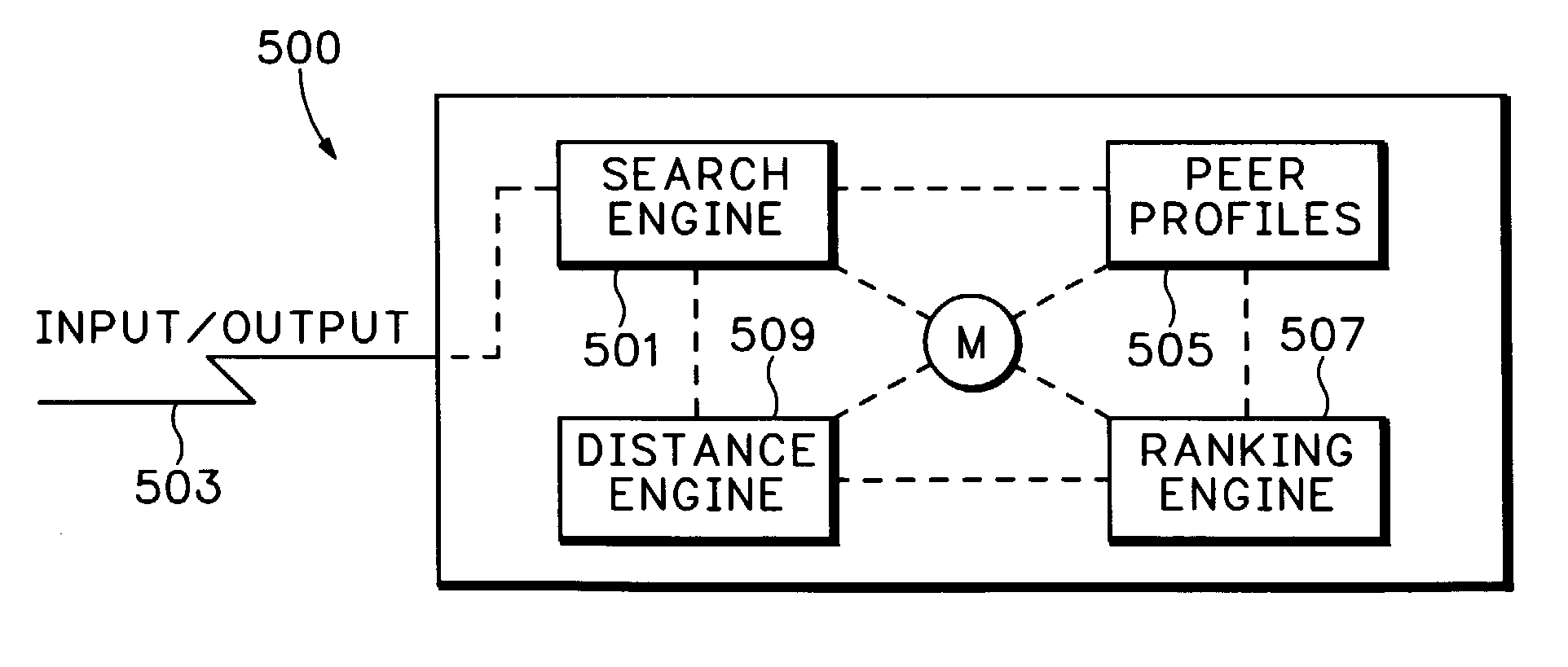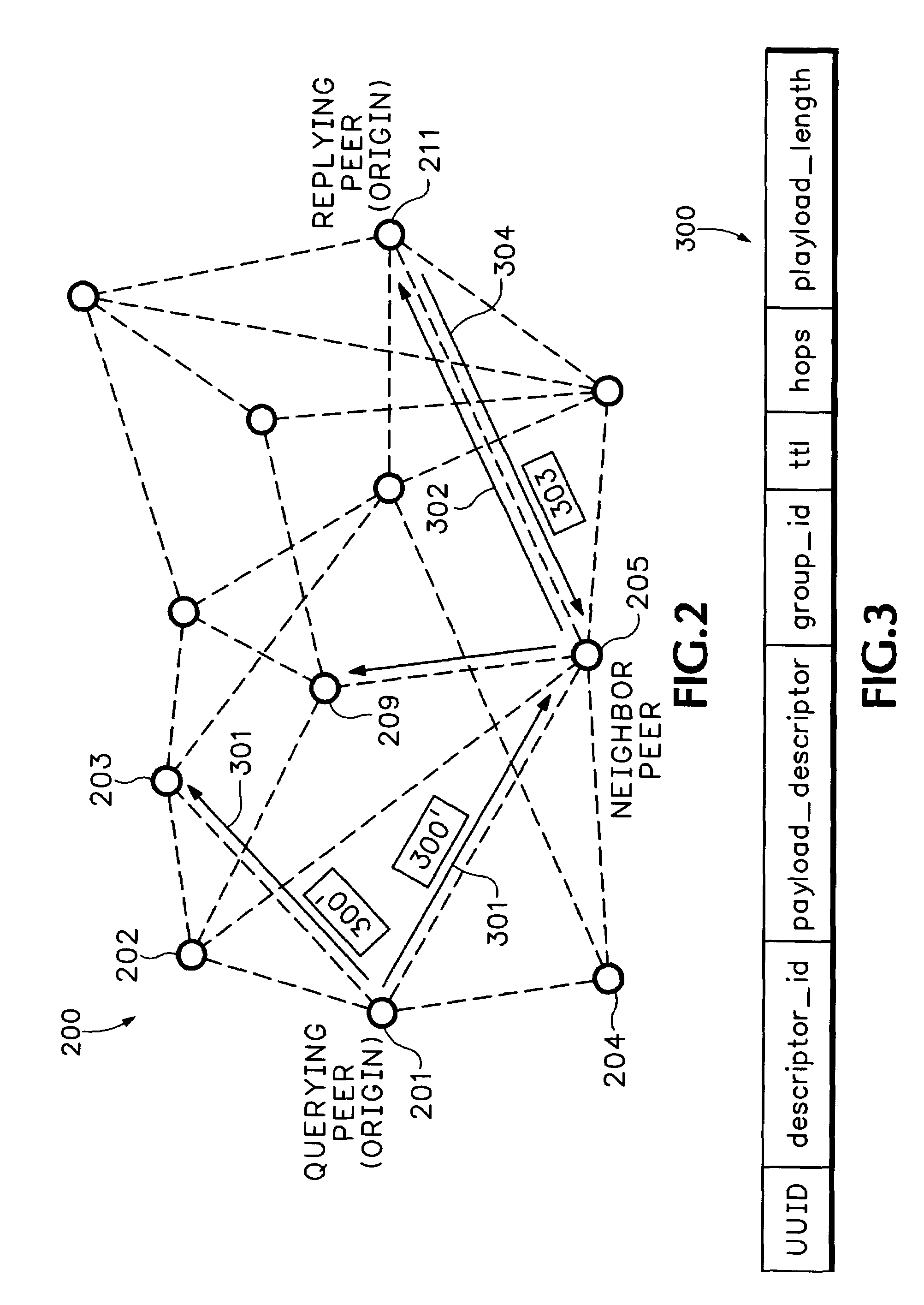Distributed information retrieval in peer-to-peer networks
a peer-to-peer network and information retrieval technology, applied in the field of computer networking, can solve the problems of unstable connectivity, inability to search and retrieve desired information, inefficient search mechanisms in peer-to-peer networks, etc., and achieve the effect of minimizing communication costs and improving speed and efficiency of information retrieval processes
- Summary
- Abstract
- Description
- Claims
- Application Information
AI Technical Summary
Benefits of technology
Problems solved by technology
Method used
Image
Examples
Embodiment Construction
[0025]As demonstrated by FIG. 1 (Prior Art), peer-to-peer searching is often “unintelligent;” i.e., a query message is simply broadcast to all neighbor peers 102 and then propagates from there. None of the prior art information retrieval methods provide any ranking of peer-to-peer nodal-based resources. In other words, there is no measure of relevance as to how relevant any particular peer is as to the current topic-of-interest, e.g., what is each peer's knowledge with respect to the topic of “jazz music?”
[0026]FIG. 2 is a schematic of a peer-to-peer network 200 and FIG. 4 is a flow chart demonstrating a process 400 for intelligent searching in such a peer-to-peer network. In general, each peer uses the knowledge it obtains from monitoring past queries and replies to propagate a new query message only to a subset of its peers. Simultaneous reference to both FIGS. 2 and 4 will aid in understanding the following details.
[0027]The Querying Peer 201 originates a data packet message 300′...
PUM
 Login to View More
Login to View More Abstract
Description
Claims
Application Information
 Login to View More
Login to View More - R&D
- Intellectual Property
- Life Sciences
- Materials
- Tech Scout
- Unparalleled Data Quality
- Higher Quality Content
- 60% Fewer Hallucinations
Browse by: Latest US Patents, China's latest patents, Technical Efficacy Thesaurus, Application Domain, Technology Topic, Popular Technical Reports.
© 2025 PatSnap. All rights reserved.Legal|Privacy policy|Modern Slavery Act Transparency Statement|Sitemap|About US| Contact US: help@patsnap.com



